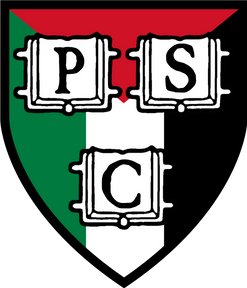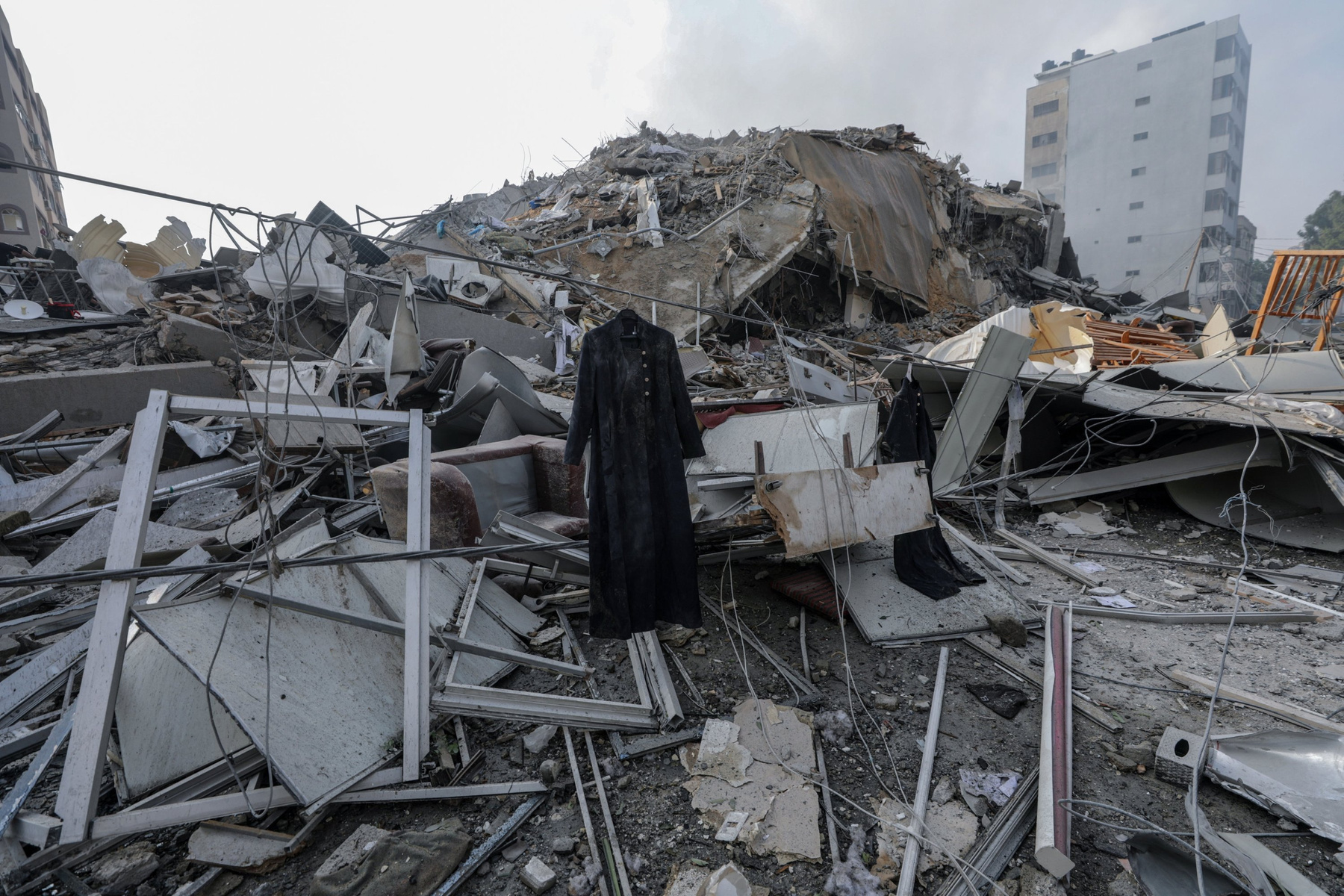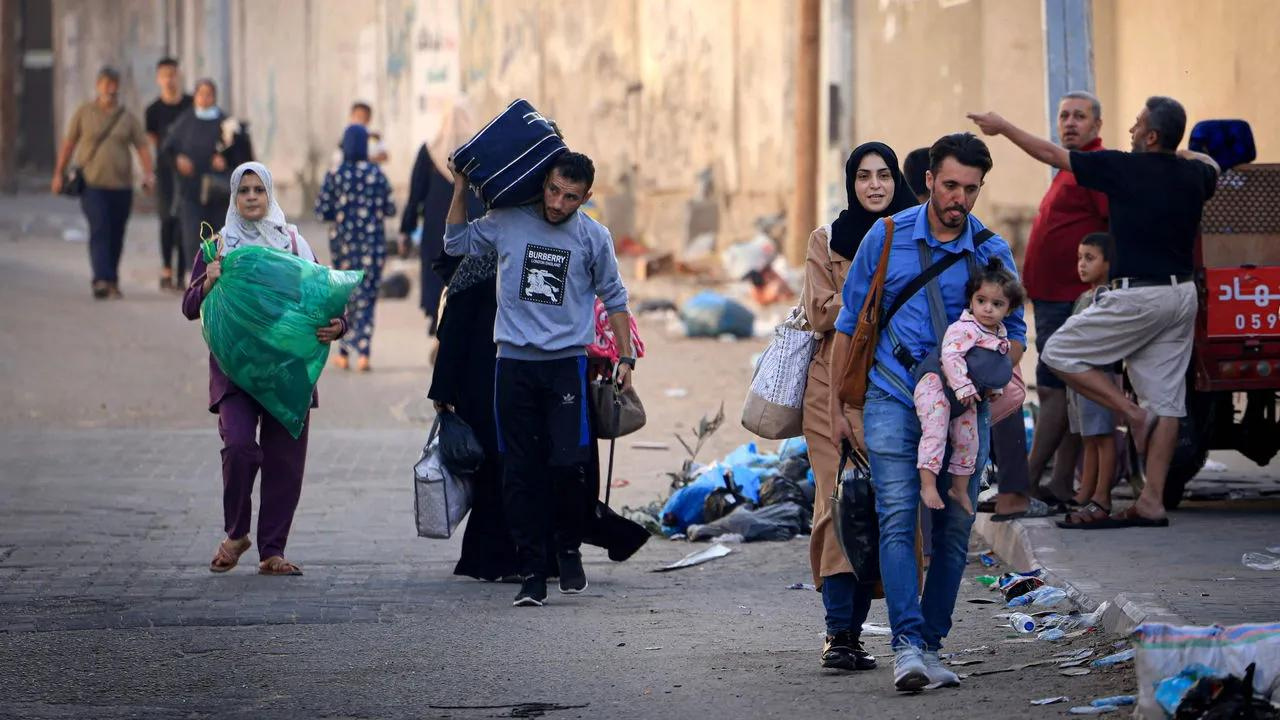
life under the rubble
an art installation for gaza

‘Life under the rubble’ is a one-day public art installation in harvard yard evoking the destruction, devastation, and targeting of all aspects of gazan life today.

As you walk around harvard yard, reflect on this geospacial mapping of gaza, here.
take time to learn about the six domains of gazan life under siege today: the home, the hospital, the school, the graveyard, the refugee camp,
and the diaspora.
as of wednesday november 15th,
11,078 people have been killed by the israeli occupation, 41% are children (4506), 45% female (4969) and 55% male (6109).
50% of gazan hospitals are no longer functioning, with the rest, on the brink of collapse, with no fuel, electricity, food, or water.
Heavy bombardment has displaced 1.5 million people.
200,000 people have entirely lost their homes.
this is genocide. ceasefire now.
learn more:
life under the rubble
an art installation for gaza
“Life Under the Rubble” visually mourns the lives of over 11,000 Palestinians killed in Gaza during the ongoing genocide that has unfolded in the past month. The exhibit is an exploration of Palestinian life and loss, across multiple facets: the Hospital, the Home, the School, the Refugee Camp, the Diaspora, and the Graveyard. As you walk through the representations of Gaza under siege, geospatially mapped onto the heart of Harvard Yard, we encourage you to scan the QR codes and learn more about how the violence in Palestine cannot be separated from our own reality.
“Life Under the Rubble” is not only a display of grief, but also a reminder of how the institutions in which we exist are directly complicit in violence against Palestinians, through the university’s investment in the Israeli apartheid regime, and refusal to recognize the value of Palestinian lives.
Trigger Warning– Death, Loss:
The imagery in this exhibition includes various representations of death, suffering, and loss. While the artistic representation aims to capture facets of Palestinian life in light of the destruction and violence in Gaza, it relays a central theme of mourning and grief, and we recognize that some of the visuals in the installation– showing medical suffering, lost childhood, and displacement– may be a source of discomfort for viewers. We encourage you to take appropriate space to process the imagery, and reflect on the themes depicted.


the home
today, we are witnessing the “Domicide” of Gaza: the deliberate destruction of home, leading to palestinian displacement and erasure
40,000 homes have been completely destroyed by Israeli bombardments

“I told my sons that we should not all reside in one house during the attack for fear that Israel would bomb our house and kill us all... I wanted one of us to remain alive, so my sons dispersed to different houses” — Majed Mushtaha, Gazan father
“In our homes, there were weddings, births, upbringing, teaching, and education. Our homes contained both old and new furniture. In our homes, we ate, played, conversed, laughed, and also experienced sadness. It is not easy to make them worthless or act as if they are as insignificant as a fallen cigarette butt.” -Mohammed Cloub, owner of destroyed home in Gaza

An ode to the home
We represent the testimony of the rubble to the lives, memories, and laughs it once encompassed. “The Home” speaks to the livlihoods and dreams of Gazans that were shattered by bombs. We paint a picture of a mundane living room, clearly once inhabited by children whose toys have been left behind, a newlywed whose wedding dress’s blood stains tell a story of an end rather than a beginning , and personal everyday items that indicate the complexity of the lives lost.
The virtual pictures in the description of “the home” are all intentionally of Gazan fathers, who have been championing rescue efforts and sacrificing their shares and safety for the survivors around them. Gazan fathers have faded into the background of the conversation humanizing Gazan as it centers women and children.








the hospital



















27490
number of people injured in gaza
253
attacks on healthcare, as calculated by the who
22
hospitals have been destroyed
50%
of hospitals are no longer functioning
130
premature babies are at imminent risk of death, due to a lack of fuel.
160%
of hospital beds currently occupied in gaza’s 7 major hospitals.
In the past 39 days,
today,

on gaza & gauze



An ode to HUmanitarian medicine
A representation of Gaza’s hospitals, this aspect of ‘Life Under the Rubble’ features medical equipment and scenery, evoking utter desperation. Amongst the piles of rubble: babies wrapped in foil, to rerpresent the 39 babies at al-Shifa hospital who have been wrapped in foil in the absence of incubator fuel or electricity; scrubs with quotes taken from @gazamedicvoices; gauze, to pay homage to the shared etymology of the word ‘gauze’ and ‘gaza’; a list of the healthcare workers killed, so that we nay remember and mourn their sacrifice.

the School
All schools in Gaza have been suspended or closed since the start of the escalation
"A child is killed on average every 10 minutes in the Gaza Strip"
– WHO CHIEF
- 625,000 CHildren are now out of school
- 4400+ CHildren killed in gaza in the last month

Displaced Gazans have sought refuge in schools, even though they too are subject to destruction
"A child is killed on average every 10 minutes in the Gaza Strip" -WHO Chief

Before I was a Gazan
by Naomi Shihab Nye
I was a boy
and my homework was missing,
paper with numbers on it,
stacked and lined,
I was looking for my piece of paper,
proud of this plus that, then
multiplied,
not remembering if I had left it
on the table after showing to my uncle
or the shelf after combing my hair
but it was still somewhere
and I was going to find it and turn it in,
make my teacher happy,
make her say my name to the whole class,
before everything got subtracted
in a minut
even my uncle
even my teacher
even the best math student and his baby sister
who couldn’t talk yet.
And now I would do anything
for a problem I could solve.


An ode to education
In the context of Palestine, education, or lack thereof, has been globally weaponized.
In Gaza, the 2023-2024 school year has been halted indefinetly, leaving Gaza’s 50% school-aged population without an education. Schools, despite being explicitly protected by the UN, have become targets, endangering displaced Gazans who shelter in playgrounds and classrooms. How can students dream when their desks are empty, when their pencils are all broken, when the world denies them their very safety?
At Harvard, efforts of education about what is happening in Gaza have been attacked and mischaracterized as students have been doxxed, harassed, and intimidated for speaking up for Palestine. They have been called animals, terrorists, and suicide bombers for daring to question the systematic erasure of Palestine on campus. How can students mourn their families, learn about justice, or dream about equality, when our campus is complicit in censoring pro-Palestinian freedom of speech hence contributing to Palestinian erasure?

the graveyard
Gazan authorities have started using ice cream trucks to store dead bodies

Israel has targeted dozens of mosques and churches in the Gaza Strip.

20% of gaza’s mosques and 3 of the most historical churches in the world have been destroyed.
An ode to death
Even in their grief and death, Gazans are denied their basic dignity and human rights. ‘The Graveyard’ representation in ‘Life Under the Rubble’ pays respect to Gazans, Muslims and Christians alike, acknowledging their diverse religious rituals of honoring the dead. In Islam, bodies are buried above ground, typically in stone structures. We highlight this practice using constructions made of the banners of names of Gazans who have died, written by members of the Harvard community. In Christianity, bodies are buried inside coffins. We hence use a singular coffin, indiciative of Palestine’s increasingly shrinking Christian population, being erased by the Israeli Occupation Forces as we speak.

the refugee camp
over 2/3 of gaza’s population are refugees

Israeli airstrikes have targeted jabalia refugee camp – gaza’s largest camp. dozens were killed.

An ode to displAcement
In Arabic the word “Nazeh” was coined to refer to refugees who get displaced again after their initial expulsion. Israel’s genocidal bombing of Jabalia refugee camp after having caused its creation in the Nakba of 1948 is an indication of their intentions of Palestinian erasure. Recent Israeli aggression on Gaza has created many “Nazeh”s, to whom we dedicate “‘The refugee camp.” The scattered luggage points to the constant displacement and movement of Palestinian refugees. We also acknowledge the conditions of life in refugee camps with limited resources and basic necessities, majorly provided by the UNRWA, which have not been available during the escalation of Israeli aggression this month.
The Palestinian refugee population remains entitled to their right to return.
the diaspora


2023
1948
‘We’re rolling out nakba 2023'
israeli minister, avi dichter
The nakba, which means ‘catastrophe’ in arabic, refers to the mass violent disposession and displacement of palestinians in 1948.

Motherland
by Safa Salem, H ‘20
I took a trip to my motherland
It began with a kiss upon my mother's hand
Hugs abound in a warm embrace
A gentle breeze, the sunshine on my face
We took blissful steps in our olive grove,
Chased sunsets as my father quickly drove
I took a trip to my motherland
A soldier's gun against my mother's hand
Our pursuit of an orange tree
Violently affronted by the occupier's decree
Our oranges fell to the floor
As we entered a home without its door
I took a trip to my motherland
A phone recording in my mother's hand
Twelve soldiers for just one boy
Carrying out the apartheid's ploy
The call to prayer echoes behind
A site we did not expect to find
I took a trip to my motherland
The passport opens from my mother's hand
As we seek permission to cross through
A checkpoint and a wall obscure our view
The soldier shrugs his head in a no
We pull to the right, we cannot go
I took a trip to my motherland
And trembled as I held my mother's hand
Our gentle stroll
Took quite its toll
The white hospital floor bled red
As my mother lay amidst the hospital bed
I took a trip to my motherland
And left my heart in my mother's hand
We keep our keys and hope to return home
To be allowed to enter our golden dome
And one day soon we will rejoice
For prevailing, despite our silenced voice
I took a trip to my motherland
An index finger lifts from my mother's hand
Our heads touch the floor as we pray
Wishing and wishing that they'll let us stay
And when I return I'll make my way around
And in the end, I'll be buried in its ground
An ode to existEnce
We exist in community with Palestinian peers here, at Harvard, whose families were displaced in 1948. In ‘The Diaspora’ we encourage you to meditate on the experience of Palestinians abroad. How do you watch as loved ones get murdered, while you are thousands of miles--and multiple oceans--away? We invoke text messages exchanged with loved ones in Gaza, as phones become a child of diaspora’s only portal to the motherland. We also portray, in a literal sense, how the events of the Nakba in 1948 mirror the events taking place in Gaza today. We ask that you reflect on your own role, witnessing the erasure of Palestinian history as it unfolds. We invite you to share these reflections on a bulletin board around some prints of Palestinian art depicting the diasporic experience.

sources & thank you
We would like to thank and credit the artistic, journalistic, and poetic research that informs this exhibition. Thank you to the Palestine Solidarity Committee community for helping make this exhibition, and Palestine organizing on campus, possible. Thank you, also, to the Dean of Students Office, and the Yard Operations team, without whom this exhibit would not have happened.
Thank you to all of you who continue to show up for Palestine.

Thank you, dear Gaza, for allowing us to tell your story.
May you live to tell it in a free Palestine.


